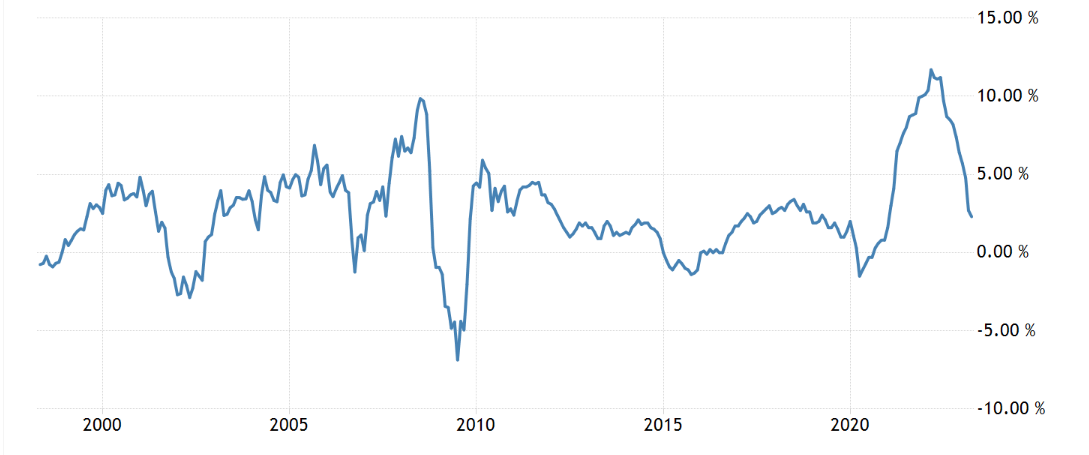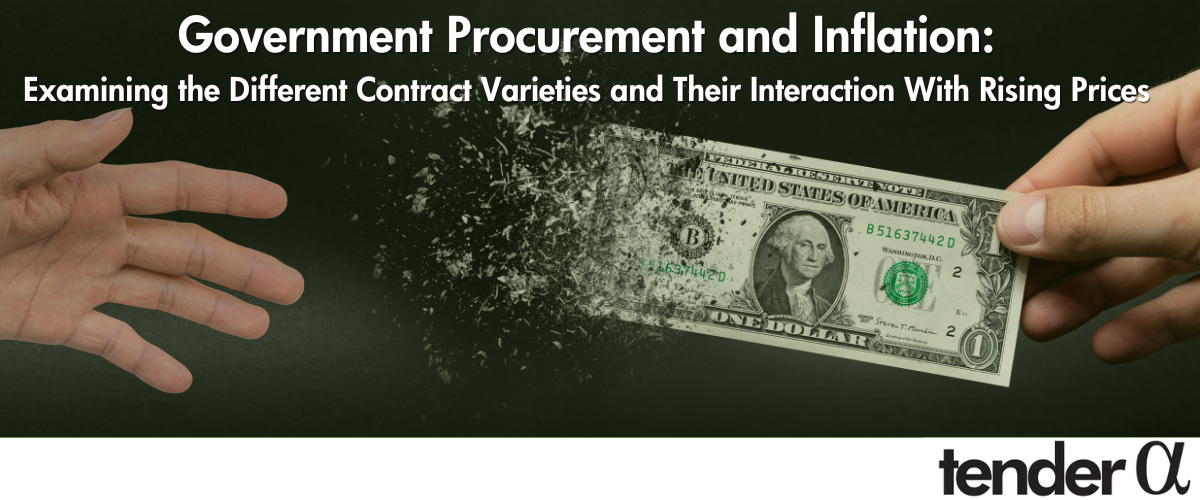Key points:
* PPI peaked at just below 12% in early 2022 and has now returned to levels observed through much of the 2010s;
* Firm fixed-price contracts are the most sensitive contract type to inflation as the company bears all of the additional costs to fulfil a procurement award at a pre-set price;
* Fixed-price incentive contracts strike a middle ground between the interests of the company and the government, with both sharing on cost savings and cost overruns, up to a pre-set amount;
* Cost-plus (cost-reimbursable) contracts allow the greatest flexibility when it comes to inflation as the company records costs at the prices they are incurred in each year of a contract's life;
* Economic price adjustment clauses can help mitigate the effect of inflation on fixed price contracts.
Introduction
After being the curse of low-and-middle-income economies until recently, inflation has made a comeback to high income economies' agenda. While the latest spell of rapidly rising prices appears to be losing momentum, we decided to consider the implications inflation has on the government procurement front.
The most relevant metric for pricing pressures faced by firms is the producer price index (PPI):
Figure 1: Annual change in U.S. producer prices, past 25 years

Source: Tradingeconomics.com
As we can see from the chart above, annual change in U.S. producer prices peaked at just below 12% in early 2022 and has been falling ever since. Case in point, PPI was up 2.3% Y/Y in April 2023, returning to levels observed in the 2010s. Nevertheless, the 2022 top in the PPI surpassed the peak achieved before the Great Financial Crisis of 2008, but was below the 15-20% increases recorded during the inflation episodes of the late 1970s and early 1980s.
Contract varieties
When it comes to inflation and its effect on government procurement, it is important to consider the nature of the contract as it relates to expenses incurred by the firm to fulfil the order requirements. In general, there are two main types of contracts:
- Fixed price contracts – the firm agrees to deliver the goods or services at a pre-agreed price.
- Cost-plus (cost-reimbursable) contracts – the firm sets out to deliver the goods or services and applies a profit margin on top of the costs incurred.
Fixed price contracts can be further broken down into:
- Firm fixed-price contracts – the firm receives a fixed price irrespective of the actual costs incurred and carries the burden of any cost overruns.
- Fixed-price incentive contracts – the firm shares savings for cost underruns with the purchaser; respectively the firm can raise prices when cost overruns occur. Costs can only increase up to a negotiated ceiling price. Above this ceiling, the firm carries the entire burden of costs.
Inflation implications
Now that we have outlined the main types of contracts, we will focus on how inflation impacts government suppliers.
Since inflation has been a cornerstone of economic policy over the recent past, its effects are well understood and accounted for in government procurement contracts. That said, unexpected high (or low) inflation can have adverse (or beneficial) consequences contract awardees, depending on the type of contract used. This is because inflation can cause cost overruns on programs and eat into corporate margins, potentially leading to outright losses in extreme cases. Below, we will highlight inflation's effect on each type of contract.
1. Firm fixed-price contracts /most sensitive to inflation/
Firm fixed-price contracts carry the greatest risk of cost overruns due to unexpectedly high inflation. This is because the firm agrees to receive a given payment and to deliver the goods or services without any additional reimbursement. Should material or labour prices rise, the additional costs are deduced directly from the company's profits.
At the same time, the firm gets to keep all of the savings it may achieve in periods of low inflation or even outright deflation.
2. Fixed-price incentive contracts /only sensitive to very high inflation/
Fixed-price incentive contracts allow the company to charge the purchaser extra if costs outrun initial estimates, as long as they are below a negotiated ceiling price. Thus in this contract type, the company is more protected from elevated inflation levels. However, if inflation is so high that it drives costs above the negotiated ceiling price, the additional costs are deduced directly from the company's profits.
In this contract type, the company has to share cost savings with the purchaser, reducing the benefit of periods of low inflation or even outright deflation.
3. Cost-plus (cost-reimbursable) contracts /most flexible in terms of inflation/
Cost-plus (cost-reimbursable) contracts are arguably the most reliable contracts a company can receive. This is because the expenses the company makes are recorded at the prices they are incurred, taking into account the inflation rate in each year of a contract's life. This greatly reduces variability from swings in inflation, both up and down, and provides the company with a stable source of income.
Mitigation
One way companies can hedge the risk of unexpectedly high inflation is to include economic price adjustment clauses in contracts, which would permit, subject to the particular contractual terms, cost adjustments in fixed-price contracts for unexpected inflation.
Examples From Companies in Our Coverage
Throughout our Top Government Contractors series, we have come across various examples of how inflation affects the companies' top and bottom line.
Oshkosh, which we covered in part 34 of the series here, cited inflation in steel prices as a main contributor to lower margins in the Defense segment. As inflation turned out higher than expected, the company is booking cumulative catch-up adjustments, which take into account the additional costs the company will have to make to deliver the products at the pre-agreed price. As inflation normalizes, Oshkosh expects Defense margins to move back up. For commercial or faster cycle products, such as fire trucks, the company is raising prices to mitigate the inflationary pressures.
Textron, which we covered in part 33 of the series here, has been able to offset inflationary pressures in its key Aviation segment by raising prices, thus delivering consistent profits. What's more, the company forecasts stable profitability in light of the prices baked into the Aviation segment's backlog.
General Dynamics, which we covered in part 30 of the series here, took a charge on the Virginia submarine program to reflect cost pressures within supply chains, driving down margins. Other inflation headwinds were covered by an inflation reimbursement which did not carry profits.
In summary, company conference calls are a treasure trove to gain insights how inflation dynamics play out, given the specifics each individual corporation faces.
Conclusion
Given the widely adopted policy of inflation targeting by central banks around the world, companies need to incorporate inflation in their budgeting when vying for government contracts.
Different contract varieties or clauses can cushion the negative effects inflation has on contract awardees, ensuring government procurement contracts are a steady and reliable stream of revenue for corporations.
In conclusion, we can rank the contract types from most sensitive to inflation to least exposed to the effects of rising prices:
1. Firm fixed-price contracts
2. Fixed-price incentive contracts
3. Cost-plus (cost-reimbursable) contracts
Incorporating the right mix of contracts for the expected economic circumstances is vital to ensure a healthy government procurement market.
To learn more about the ways in which TenderAlpha can provide you with insightful forward-looking public procurement data, get in touch now!
